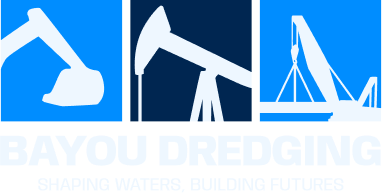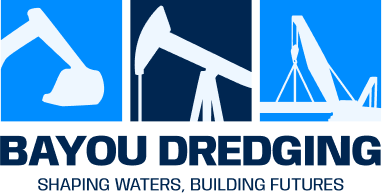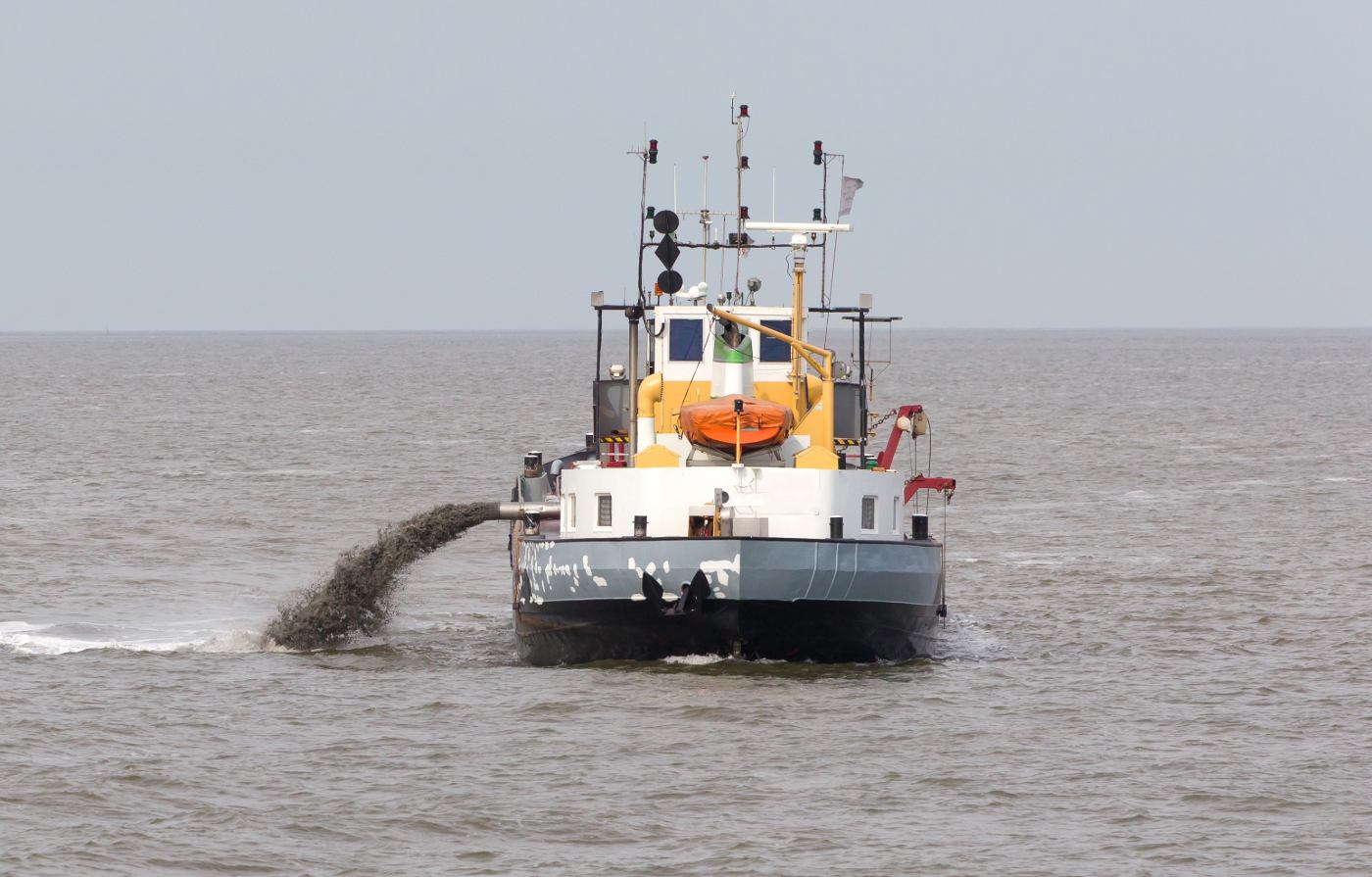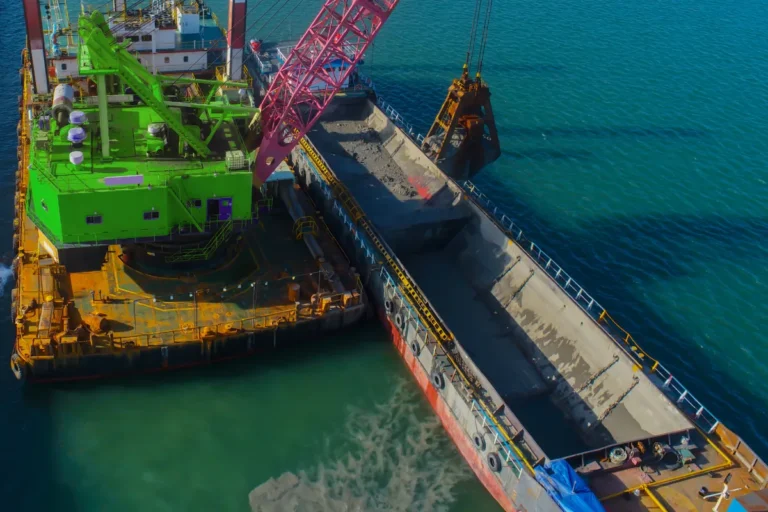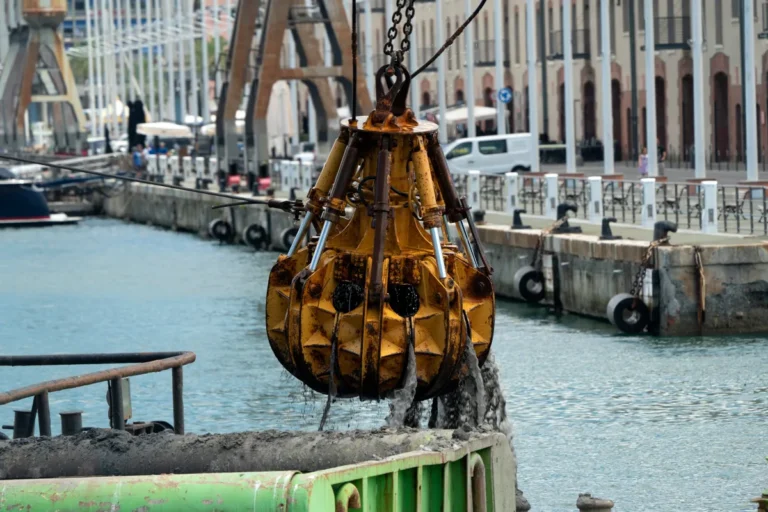Dredging is a critical process used to excavate and remove sediments, debris, and other materials from the bottom of water bodies, including rivers, lakes, harbors, and coastal areas. Over time, the natural accumulation of silt, sand, and organic matter can obstruct waterways, reduce water depth, and interfere with maritime navigation, infrastructure development, and environmental health. This is where the dredger boat comes into play.
A dredger boat, also commonly referred to as a dredge boat, is a specialized watercraft equipped with powerful dredging systems designed to excavate and transport underwater materials. Whether operating in shallow inland waters or deep offshore environments, these boats are engineered to restore and maintain the functional capacity of waterways. If you’re wondering what a dredge boat is, it is essentially a floating platform fitted with suction or mechanical equipment to perform excavation and sediment relocation efficiently.
Dredger boats play a vital role across multiple industries. In industrial settings, they help maintain clear shipping channels, support offshore mining operations, and assist in large-scale construction projects, such as port expansions. Environmentally, dredge boats are used to clean polluted sediments, restore wetlands, and rehabilitate aquatic ecosystems. In terms of navigation, these vessels ensure safe passage for commercial shipping and recreational boating by maintaining required depth levels in rivers, canals, and harbors.
From flood mitigation to land reclamation, the dredger boat is indispensable in maintaining our waterways’ functionality, safety, and sustainability.
What Is a Dredger Boat?
A dredger boat is a specialized vessel designed specifically for the task of dredging—removing sediment, silt, sand, and debris from underwater environments such as rivers, lakes, estuaries, ports, and coastal zones. The primary purpose of a dredger boat is to restore water depth, improve navigation, reclaim land, or remove contaminated materials. These boats are equipped with advanced mechanical or hydraulic systems, such as suction pumps, cutter heads, or buckets, that enable precise and continuous excavation below the waterline.
When people ask, “What is a dredge boat?” they are often referring to the same type of equipment. The terms “dredger boat” and “dredge boat” are used interchangeably, with no functional difference. Both describe watercraft designed to perform dredging operations. The variation in terminology is often based on regional preference or industry usage, but the core capabilities remain the same.
Unlike standard marine equipment, such as cargo ships, fishing vessels, or tugboats, a dredger boat is built for a very specific task: subaquatic excavation and sediment transport. While conventional boats are made for mobility or freight handling, dredger boats are stationary or slow-moving platforms anchored to a site during operation, often relying on spuds or anchors to maintain position while working.
The functionality of a dredge boat sets it apart from general marine tools or construction barges. These vessels are engineered to operate in a variety of challenging environments—from shallow ponds to busy shipping lanes—utilizing customized equipment tailored to the specific dredging method and material type. Whether deployed for maintenance dredging, environmental remediation, or new construction, the dredger boat is an essential asset in any large-scale aquatic project.
Core Functions of a Dredger Boat
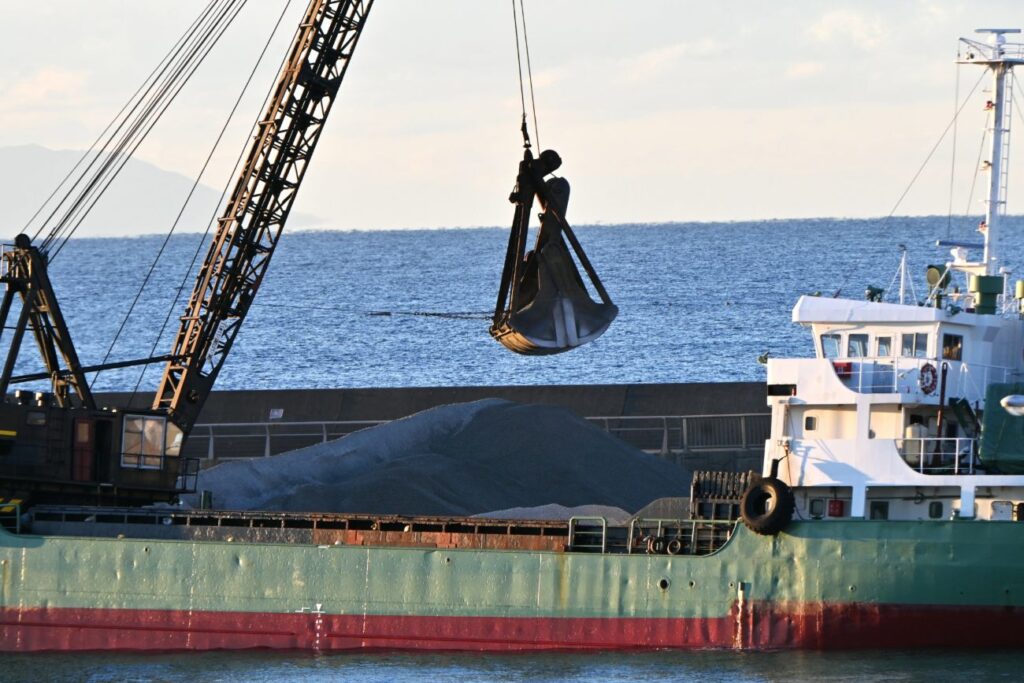
A dredger boat serves as a versatile tool for managing and transforming aquatic environments. Its design allows it to handle a wide range of operational tasks essential for maintaining, restoring, and developing waterways and coastal zones. Below are the primary functions that define the utility of a dredge boat in modern marine and civil engineering projects.
1. Excavation of Sediments from Waterbeds
The core operation of a dredger boat is the removal of accumulated sediments such as silt, sand, gravel, and debris from the bottoms of rivers, lakes, harbors, and other water bodies. This excavation process is crucial for maintaining navigable depths in busy ports and inland waterways. The boat utilizes hydraulic suction systems, cutter heads, or mechanical buckets to dislodge and lift materials from the waterbed.
2. Transportation of Dredged Material
Once material is excavated, the dredge boat either stores it onboard (in the case of hopper dredgers) or transfers it through floating pipelines to designated disposal or reuse sites. Efficient material transport is essential for large-scale operations such as beach nourishment, flood prevention, or industrial land expansion. The ability of a dredger boat to handle excavation and material relocation in a continuous process significantly reduces project timelines.
3. Site Reclamation and Preparation
Dredger boats are widely used in land reclamation projects where submerged areas are converted into usable land. This is common in urban development, coastal expansion, and infrastructure construction. By depositing dredged material in low-lying or offshore zones, these vessels prepare stable foundations for future building, agriculture, or transportation projects.
4. Environmental Maintenance (e.g., Pollution Removal)
A lesser-known but increasingly important role of a dredger boat is environmental remediation. These boats help remove contaminated sediments, restore natural water flow, and rehabilitate degraded ecosystems. In scenarios where industrial pollution, algae blooms, or organic decay have compromised water quality, a dredge boat offers a controlled method for cleaning and rejuvenating aquatic environments.
Understanding what a dredge boat is becomes clear when you consider its core functions—it’s not just a machine, but a critical instrument for balancing development and environmental responsibility in aquatic regions.
Major Types of Dredger Boats
Understanding the various types of dredger boats is essential when evaluating dredging solutions for different environments and project requirements. Each type of dredge boat is engineered with specific technologies that allow it to perform optimally under certain conditions, whether it’s cutting through compacted sediment or operating in soft, swampy terrain. Here’s a breakdown of the most common types of dredger boats used today.
1. Cutter Suction Dredger (CSD)
A Cutter Suction Dredger is one of the most widely used dredger boats in the world. It features a rotating cutter head at the suction inlet, which loosens compacted soil or sediment before it is drawn through a suction pipeline and discharged to a nearby disposal area.
How it works: The cutter breaks up material, and the suction pump transfers it through floating or shore-based pipelines.
Ideal applications: CSDs are ideal for hard-packed riverbeds, land reclamation projects, and port construction where precision and power are required.
2. Trailing Suction Hopper Dredger (TSHD)
A Trailing Suction Hopper Dredger is a self-propelled dredge boat equipped with suction pipes that trail along the seabed while the vessel moves forward. Dredged material is stored in an onboard hopper.
Suction mechanism and hopper system: The suction head draws material into the hopper using vacuum pressure; once full, the vessel sails to a disposal area to offload the material, typically through bottom doors or pumps.
Common usage scenarios: Maintenance dredging in shipping channels, harbor deepening, and beach nourishment.
3. Bucket Dredger
A Bucket Dredger uses a chain of buckets mounted on a rotating mechanism to scoop up sediments from the waterbed. This traditional method is still favored for certain projects due to its simplicity and mechanical efficiency.
Mechanical operation and dredging depth: Buckets excavate and lift material, often capable of reaching greater depths than some modern systems.
Where it’s commonly deployed: In confined areas like small rivers, urban canals, or where precision is crucial.
4. Jet-Lift and Air-Lift Dredgers
These specialized dredge boats utilize fluid mechanics to move sediments.
Fluidization and lift techniques: Jet-lift dredgers use high-pressure water jets to dislodge and transport material, while air-lift dredgers inject air into a pipe to lift sediment through differential pressure.
Niche applications: Ideal for fragile or archaeological sites, scientific sampling, and areas where minimal disturbance is needed.
5. Amphibious Dredge Boats
Amphibious dredger boats are designed to operate on both land and water, making them uniquely capable of working in shallow, marshy, or swampy environments.
Use in swampy or shallow environments: These vessels use pontoons and track systems to navigate wetlands and soft terrain without sinking.
Key industries served: Environmental restoration, wetland conservation, inland flood management, and remote infrastructure development.
Components of a Dredger Boat

A dredger boat is a complex piece of marine engineering, equipped with a range of mechanical and hydraulic components that work together to excavate, transport, and discharge sediment from underwater environments. Each system plays a critical role in determining the efficiency, depth capability, and overall performance of the vessel. For those inquiring about what a dredge boat is, understanding its core components offers valuable insight into how it operates in the field.
Pump Systems and Suction Heads
At the heart of every dredger boat is the pump system, responsible for creating the suction force needed to lift sediment from the waterbed. These pumps, often centrifugal or slurry-type, are connected to suction heads that draw in sediment, water, and debris. The size and power of the pump directly affect the dredging capacity and the distance the material can be transported. High-efficiency suction systems are crucial for maintaining continuous operation, particularly in high-volume or deep dredging projects.
Cutter Heads and Augers
In cutter suction dredgers and auger dredgers, mechanical excavation tools are used to break up compacted materials before they are suctioned. Cutter heads are rotating drums with hardened teeth that grind through dense clay, rock, or packed sand. Augers, on the other hand, use a helical screw design to direct loosened material toward the suction inlet. These attachments allow a dredge boat to operate in a wide range of soil conditions, improving excavation precision and reducing downtime.
Hoppers, Pipelines, and Discharge Systems
Many dredger boats, such as trailing suction hopper dredgers (TSHDs), are equipped with onboard hoppers—large storage tanks where dredged material is temporarily held. From there, material can be offloaded through discharge pipelines or bottom doors. Alternatively, pipeline dredgers pump material directly to shore or reclamation areas through a network of floating and land-based pipes. These discharge systems are vital for controlling where and how the sediment is deposited.
Navigation and Control Cabins
Modern dredger boats are equipped with highly advanced navigation and control systems, enabling operators to manage dredging activities with precision. From GPS-guided positioning to real-time sediment monitoring and pump flow controls, the cabin is the nerve center of the vessel. Operators can adjust depth, cutter speed, discharge direction, and dredge path, ensuring the project remains within target specifications.
Where Are Dredger Boats Used?
The versatility of a dredger boat makes it an essential asset across a wide range of industries and environmental applications. From maintaining critical infrastructure to supporting ecological restoration, these vessels are deployed wherever underwater excavation and material relocation are required. Understanding the operational contexts of a dredge boat further illustrates its significance and helps clarify what a dredge boat is in real-world scenarios.
1. Port and Harbor Maintenance
Sediment buildup in ports and harbors can severely restrict vessel traffic and disrupt maritime commerce. Dredger boats are used to maintain channel depth, remove obstructions, and ensure safe docking for cargo ships and tankers. Regular maintenance dredging is crucial for maintaining port operations and ensuring compliance with navigational safety standards.
2. River and Canal Deepening
Natural sedimentation and debris can reduce the depth and flow capacity of rivers and canals, leading to flooding and limited navigability. A dredger boat is deployed to deepen these waterways, restore their flow, and accommodate larger vessels. This function is critical for inland transport systems and flood risk management in both urban and rural areas.
3. Coastal Restoration and Erosion Control
Waves, storms, and rising sea levels constantly erode coastal zones. Dredge boats help reclaim land and rebuild eroded shorelines by pumping sand and sediment from offshore sources back to the coastline. This process not only protects infrastructure but also supports habitat restoration and tourism development in coastal communities.
4. Mining and Aggregate Dredging
In the mining and construction industries, dredger boats are used to extract sand, gravel, and other aggregates from underwater deposits. These materials are essential for concrete production, road building, and land development. Dredging in this context allows for continuous resource extraction without the need for disruptive land-based mining operations.
5. Environmental Remediation Projects
Contaminated sediments in rivers, lakes, and industrial water bodies pose a threat to ecosystems and public health. A dredge boat is a key tool in environmental cleanup efforts, capable of precisely removing toxic materials while minimizing disturbance to surrounding areas. These projects often involve strict environmental controls and advanced dredging technologies.
Advantages of Using a Dredger Boat

Utilizing a dredger boat offers a range of operational, environmental, and financial benefits across both public and private sectors. Whether maintaining critical infrastructure or executing complex marine construction projects, a dredge boat offers efficient and scalable solutions that traditional excavation equipment cannot match. Understanding these advantages helps clarify what a dredge boat is and why it remains essential in modern waterway management.
Cost-Effective Sediment Removal
A well-equipped dredger boat is one of the most cost-efficient means of removing sediment from underwater environments. It eliminates the need for extensive labor, land-based excavation setups, or temporary road construction. By operating directly from the water, the vessel reduces material handling costs and minimizes downtime, leading to faster project completion and lower overall expenses.
Versatility Across Project Types
From deep-water ports to shallow marshlands, the design and adaptability of a dredge boat allow it to operate in a wide range of conditions. Depending on the dredging method—suction, mechanical, or jet-lift—these vessels can be used for port maintenance, land reclamation, mining, or wetland restoration. Their modular configuration and equipment options make dredger boats suitable for both large-scale and highly specialized projects.
Minimized Environmental Disturbance with Modern Systems
Modern dredger boats are built with environmental responsibility in mind. Equipped with GPS-guided positioning, real-time monitoring, and low-turbidity discharge systems, these vessels minimize disruption to aquatic habitats and water quality. Controlled sediment removal helps prevent the spread of contaminants and protects sensitive ecosystems during environmental remediation and coastal protection projects.
Operational Efficiency and Automation
Today’s dredge boats leverage automation and digital control systems to enhance precision, reduce operator fatigue, and improve safety. Features such as automated cutter head adjustment, real-time depth tracking, and programmable discharge routes increase productivity while lowering the risk of human error. This operational efficiency makes the dredger boat an indispensable tool for managing tight timelines and budgets in high-stakes marine projects.
Dredger Boat vs Other Dredging Equipment
While various dredging systems are available, the dredger boat remains one of the most comprehensive solutions for large-scale and continuous dredging operations. It’s important to compare dredge boats with other common dredging setups, such as excavator-mounted systems, to understand their strengths, use cases, and limitations. This also helps address the common question: What is a dredge boat, and when is it the optimal choice?
Comparison with Excavator-Mounted Dredge Systems
Excavator-mounted dredge systems typically involve hydraulic pumps or mechanical buckets attached to an excavator arm, mounted on a barge or amphibious platform. These setups are ideal for shallow, confined areas or projects requiring precision over a small area. However, they often have limited reach, lower production rates, and require additional support equipment, such as barges or dewatering setups.
In contrast, a dredger boat is a self-contained vessel engineered specifically for underwater excavation and sediment transport. It is capable of operating in deeper waters and can handle larger volumes of material with continuous operation. Dredge boats are equipped with integrated pumps, pipelines, and automated controls, making them more efficient for extended or high-output projects.
When a Dredge Boat Is the Better Choice
A dredger boat is typically the preferred option when working in open water environments such as rivers, lakes, ports, and offshore zones. It excels in applications that require long-distance slurry transport, large-scale sediment removal, or precise depth control. Projects involving port maintenance, land reclamation, and beach nourishment greatly benefit from the mobility, throughput, and automation capabilities of a dredge boat.
Limitations and Considerations
Despite its advantages, a dredger boat may not be suitable for all scenarios. In narrow canals, extremely shallow waters, or isolated wetland zones, the vessel’s size and draft can become a limitation. Additionally, dredge boats typically involve higher initial investments and require trained operators to manage complex systems. Projects with limited access or smaller budgets might find land-based or amphibious dredging systems more practical.
The decision between a dredger boat and alternative dredging equipment depends on the scale, location, and goals of the project. Each has its role, but for high-volume and industrial-grade dredging, the dredge boat offers unmatched performance and efficiency.
Maintenance and Operational Considerations
Operating a dredger boat requires ongoing attention to mechanical integrity, fuel efficiency, and crew readiness. Proper maintenance ensures reliability, extends the vessel’s service life, and minimizes costly downtime. Understanding these operational demands is key to appreciating what a dredge boat is and how it performs in demanding environments.
Fuel and Power Systems
A dredger boat typically relies on powerful diesel engines or electric motors to operate its pump systems, cutter heads, and propulsion mechanisms. These systems must be properly managed to ensure consistent performance during extended dredging campaigns. Fuel quality, storage, and consumption rates have a direct impact on operational costs and environmental compliance. Some modern dredge boats incorporate hybrid or electric power options to reduce emissions and improve efficiency in sensitive ecosystems.
Routine Inspections and Component Longevity
Routine inspections are crucial for maintaining the performance of critical components, including suction pumps, discharge pipelines, cutter heads, and spuds. Given the abrasive nature of dredged materials, wear and tear on mechanical parts is inevitable. Regular maintenance schedules, including oil changes, impeller replacements, and hull cleaning, help preserve the longevity of the dredge boat and avoid sudden mechanical failures during operation.
Crew Training and Safety Protocols
A well-trained crew is crucial for the safe and efficient operation of any dredger boat. Operators must understand navigation systems, equipment controls, sediment management strategies, and emergency procedures to ensure safe and efficient operations. Safety protocols, including the use of personal protective equipment (PPE), effective communication systems, and hazard awareness, are mandatory to mitigate risks in harsh marine environments. Training programs should be updated regularly to reflect new technologies and regulatory changes, ensuring the dredge boat operates within legal and safety standards.
Future Trends in Dredger Boat Technology
As the demand for sustainable infrastructure and efficient waterway management grows, the technology behind the dredger boat continues to evolve. Innovations focus on automation, reducing environmental impact, and smarter data collection to make dredging operations more effective and less intrusive. For anyone wondering what a dredge boat is today, the answer increasingly includes digital intelligence and green engineering.
Automation and Remote Operation
Next-generation dredger boats are being designed with advanced automation and remote-control capabilities. Automated systems can manage functions such as cutter head speed, pump flow rates, dredging depth, and discharge precision, minimizing operator intervention and maximizing productivity. Some dredge boats are already capable of semi-autonomous navigation and uncrewed operation, which reduces labor costs and improves safety, especially in hazardous or remote locations.
Eco-Friendly Dredging Systems
Environmental considerations are now a driving force in the design and deployment of dredge boats. Manufacturers are introducing low-emission engines, biodegradable hydraulic fluids, and sediment containment technologies to reduce ecological disruption. Modern dredger boats are built to minimize turbidity, avoid disturbing marine life, and comply with stringent environmental regulations. This shift toward sustainable dredging makes them more suitable for projects in sensitive wetlands, coral zones, and protected waterways.
Smart Monitoring and Real-Time Data Feedback
Integrated monitoring systems are transforming how dredger boats operate. Using GPS, sonar, LiDAR, and IoT sensors, operators can collect real-time data on sediment density, dredging progress, water quality, and equipment health. This data is visualized through digital dashboards, enabling precise control and timely decision-making. Smart dredging technology helps ensure compliance, optimize resource use, and maintain consistent output, even in dynamic underwater conditions.
Conclusion
In summary, a dredger boat is far more than a vessel—it’s a critical tool that enables large-scale sediment removal, environmental restoration, and waterway development across industries. From its diverse types and components to its growing role in automation and eco-conscious operations, the dredge boat represents the evolving intersection of marine engineering and sustainable progress. For anyone seeking to understand what a dredge boat is, it’s clear that these specialized machines are indispensable in shaping, maintaining, and protecting aquatic environments worldwide.
